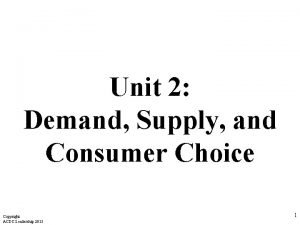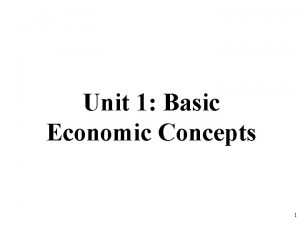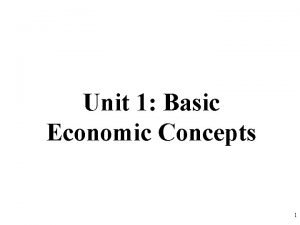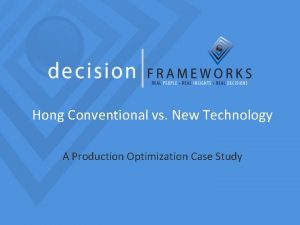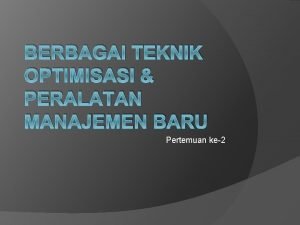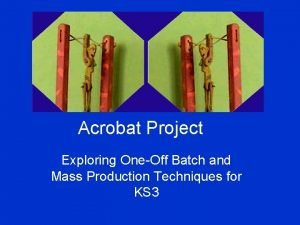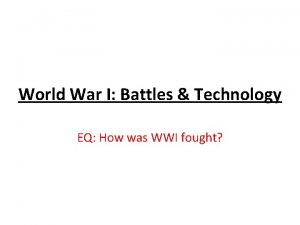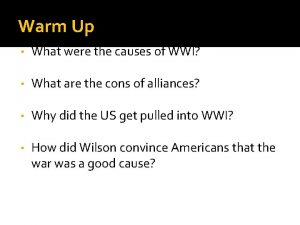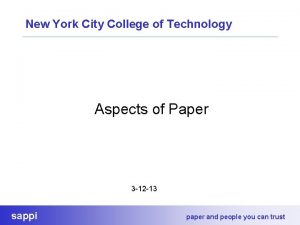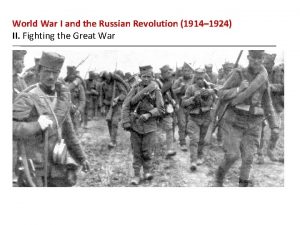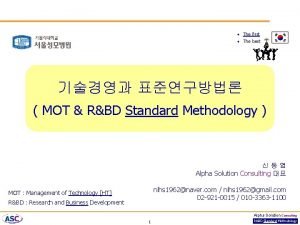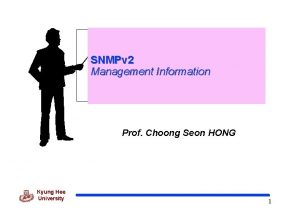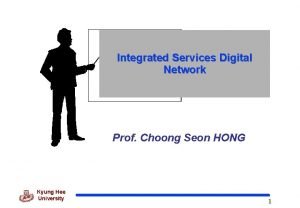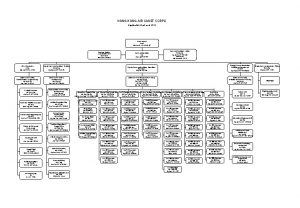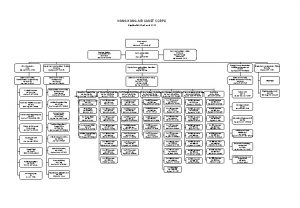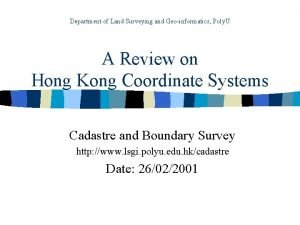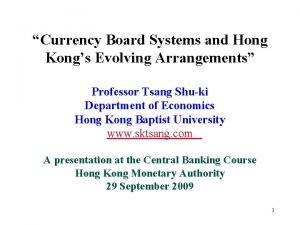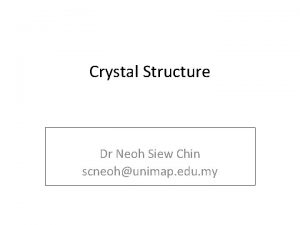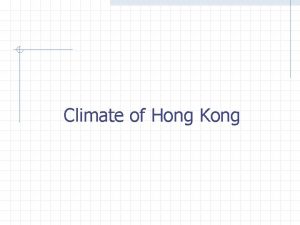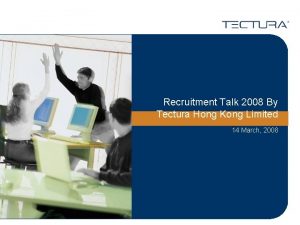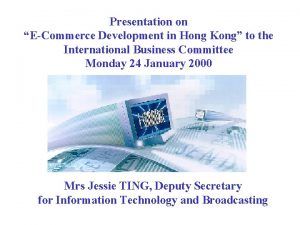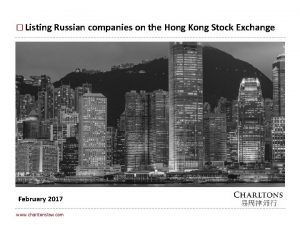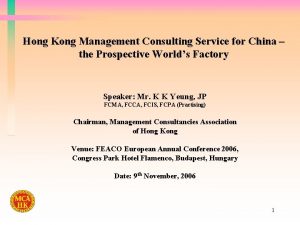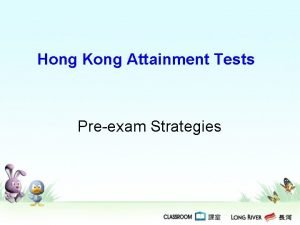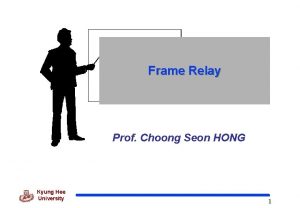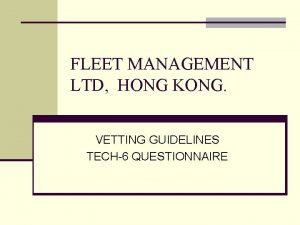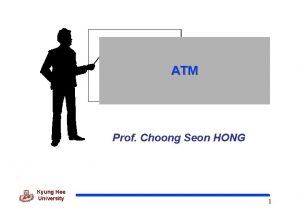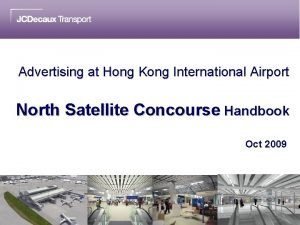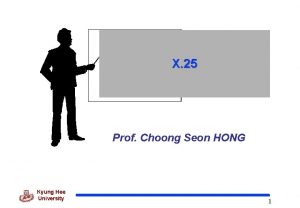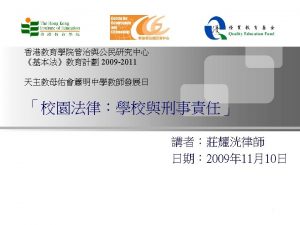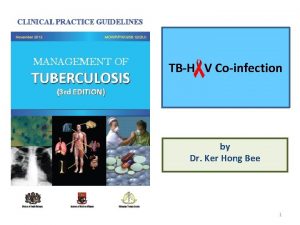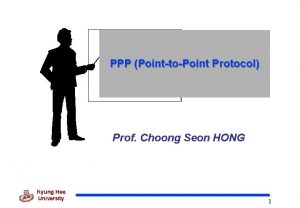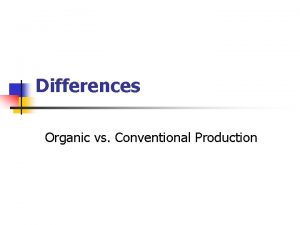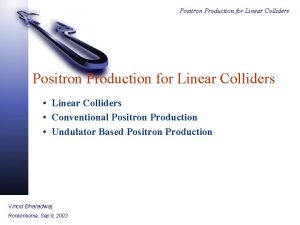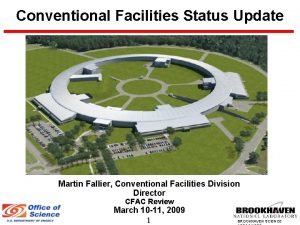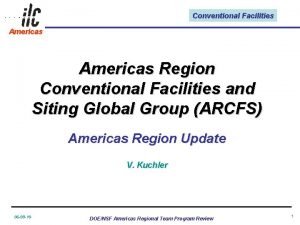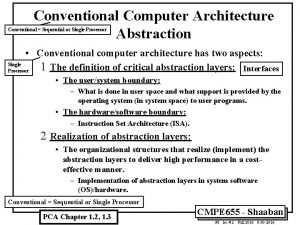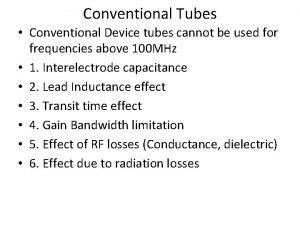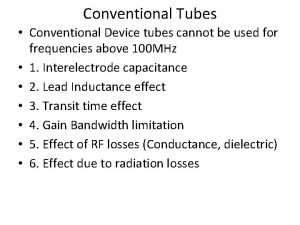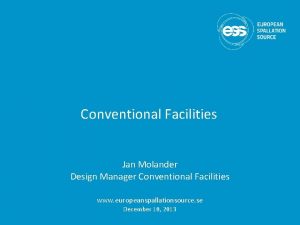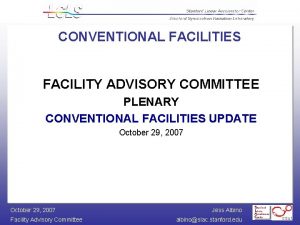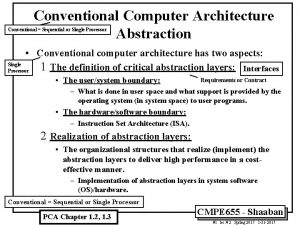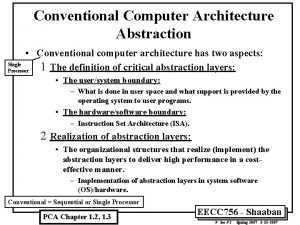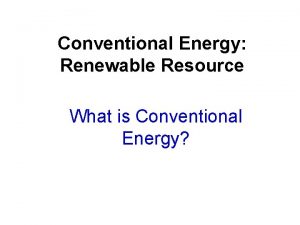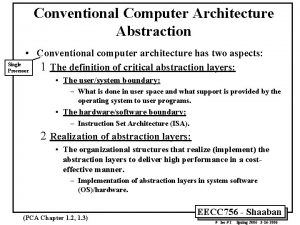Hong Conventional vs New Technology A Production Optimization

































































- Slides: 65

Hong Conventional vs. New Technology A Production Optimization Case Study

Conventional vs. New Technology BACKGROUND INFORMATION © 2014 - 2016 Decision Frameworks Inc. All rights reserved. Do not copy. 2

Background 1 An asset team at Hong Oil is considering using a new completions technology on their upcoming eleven well lateral infill program in the Belizna field. The new technology is fairly untried, and there is no guarantee that it will work. However, some team members feel that Hong should take the risk and pilot the new technology, while other team members are hesitant and would rather rely on the conventional technology. The team members who want to use the new technology believe it will be less expensive and have the potential to increase per well recovery. Their idea is to pilot the technology on at least one well and then, given it works, use it on the subsequent ten wells in the program. If the new technology is a failure, the pilot well and its resources would be lost due to the inability to refrac and drill a long lateral in the same location. For that reason, those who want to pilot the technology are debating whether it is better to pilot the technology in a potentially higher rate, “sweet spot” location (thus giving the technology its best shot), or whether not to “waste” a higher potential location and pilot the technology in a potentially lower rate, lesser quality location or a “middle of the road potential” location. On average, the conventional technology lateral wells will cost 3 MM$ to drill and complete and have estimated average initial rates of 200 Bbl/d. In comparison, the team estimates that the new technology lateral wells have the potential to cost an average of 2 MM$ to drill and complete and yield 250 Bbl/d mean initial rates, given the technology works. © 2014 - 2016 Decision Frameworks Inc. All rights reserved. Do not copy. 3

Background 2 Preliminary estimates suggest that the eleven well conventional technology program has an approximate NPV of 175 MM$. Alternatively, an eleven well program with the new technology could yield an NPV as high as 250 MM$, given the technology is successful. However, the team estimates that there is only a 20% probability that the new technology will work, i. e. , cost less and provide production improvement. If the new technology fails, then the NPV of the project is estimated at 150 MM$, given only one well is sacrificed in the pilot. Bottom line, the team is debating whether to recommend piloting the new technology or not, and whether they can condemn the technology for their field if the first pilot well fails. Some argue that a one well pilot is not sufficient to rule out the technology, while others are hesitant to risk sacrificing more wells to investigate the technology’s utility. The team is also unsure of the total number of failed pilots that management would tolerate in the infill development program before they would discontinue the use of the new technology. © 2014 - 2016 Decision Frameworks Inc. All rights reserved. Do not copy. 4

Decision Analysis Workflow © 2014 - 2016 Decision Frameworks Inc. All rights reserved. Do not copy. 5

Framing Workflow Problem Statement • Agree a problem or opportunity statement • Get input from decision makers. Issues List / Issue Categorization • Draft a list of issues as brief, complete sentences. • Categorize each issue as a Fact, a Decision, an Uncertainty or a Value/Objective. Decision Hierarchy • Prioritize the decisions as Given, Focus, or Tactical. Strategy Table / Strategies • Structure the Strategy Table, as a consolidation of the Focus Decisions from the Decision Hierarchy. • Fill out the Strategy Table menu by brainstorming the options (or choices) available in each column. Develop 2 or 3 compelling strategies to consider. Influence Diagram • Structure the key uncertainties into an influence diagram, with NPV as the primary decision metric. Decision & Risk Timeline • Agree the order in which decisions will be made and uncertainties resolved. © 2014 - 2016 Decision Frameworks Inc. All rights reserved. Do not copy. 6

Conventional vs. New Technology DECISION FRAME © 2014 - 2016 Decision Frameworks Inc. All rights reserved. Do not copy. 7

Decision Analysis Workflow © 2014 - 2016 Decision Frameworks Inc. All rights reserved. Do not copy. 8

Problem Statement Should we continue using the conventional technology or employ a new technology on our upcoming infill drilling program? Key Questions: • Is it worth piloting the new technology? • If we pilot the new technology and a well fails, should we consider a second pilot well? © 2014 - 2016 Decision Frameworks Inc. All rights reserved. Do not copy. 9

Decision Analysis Workflow © 2014 - 2016 Decision Frameworks Inc. All rights reserved. Do not copy. 10

Issues List © 2014 - 2016 Decision Frameworks Inc. All rights reserved. Do not copy. 11

Decision Analysis Workflow © 2014 - 2016 Decision Frameworks Inc. All rights reserved. Do not copy. 12

Decision Focus (Hierarchy) © 2014 - 2016 Decision Frameworks Inc. All rights reserved. Do not copy. 13

Decision Analysis Workflow © 2014 - 2016 Decision Frameworks Inc. All rights reserved. Do not copy. 14

Strategy Table Menu of Options © 2014 - 2016 Decision Frameworks Inc. All rights reserved. Do not copy. 15

Strategy Table Menu of Options © 2014 - 2016 Decision Frameworks Inc. All rights reserved. Do not copy. 16

Strategic Themes Considered © 2014 - 2016 Decision Frameworks Inc. All rights reserved. Do not copy. 17

Strategy Development © 2014 - 2016 Decision Frameworks Inc. All rights reserved. Do not copy. 18

Strategies Defined © 2014 - 2016 Decision Frameworks Inc. All rights reserved. Do not copy. 19

Initial Strategies to Evaluate © 2014 - 2016 Decision Frameworks Inc. All rights reserved. Do not copy. 20

Structuring Framing Steps and Tools The Influence Diagram and Decision and Risk Timeline framing tools help teams structure the analysis of the strategies that they wish to consider. Influence Diagram – clarify how risks and uncertainties impact the “bottom line”; are a “map” of the economic model Decision and Risk Timelines – clarify the chronological order that decisions will be made and uncertainties will be resolved © 2014 - 2016 Decision Frameworks Inc. All rights reserved. Do not copy. 21

Influence Diagram – Conventional Technology © 2014 - 2016 Decision Frameworks Inc. All rights reserved. Do not copy. 22

Influence Diagram – Pilot New Technology Strategy © 2014 - 2016 Decision Frameworks Inc. All rights reserved. Do not copy. 23

Decision & Risk Timelines D&R timeline is the short hand of a Decision Tree, depicting the basic chronological order that decisions will be made and uncertainties resolved. © 2014 - 2016 Decision Frameworks Inc. All rights reserved. Do not copy. 24

Conventional vs. New Technology BASIC DECISION TREE ANALYSIS © 2014 -2016 Decision Frameworks Inc. All rights reserved. Do not copy. 25

Deterministic versus Probabilistic Analysis Probabilistic Deterministic Tests single inputs for each variable Tests a range, or distribution, of inputs for each variable Typically P 50 or mean Chance factors, are Single output results incorporated No probabilities, risk- Generates range of results weighting or expected values Outcomes are probability- weighted Includes Tornado or other sensitivities © 2014 -2016 Decision Frameworks Inc. All rights reserved. Do not copy. Generates expected values 26

Decision trees graphically display project decisions and uncertainties in time Ordered according to: Time, and Dependencies Include: Chance and range uncertainties Probability of occurrence © 2014 -2016 Decision Frameworks Inc. All rights reserved. Do not copy. 27

Decision trees contain three different node types Decision Node (Square) Represents the choices or options under debate No probability associated Optimal choice selected by the tree based on the expected value of the decision metric Uncertainty Node (Circle) Represents the outcomes that could occur Probabilities are assigned to each outcome End Nodes (Diamonds) Terminate the tree branches Will display the metric of interest at the end of the branch © 2014 -2016 Decision Frameworks Inc. All rights reserved. Do not copy. 28

Expected value is the probability-weighted average value of the possible outcomes © 2014 -2016 Decision Frameworks Inc. All rights reserved. Do not copy. 29

Basic Decision Tree Analysis Case Instructions Evaluate the two technology strategies simply with manual entry decision trees using Treetop. Use NPV as the value measure (decision criterion). Use the following team estimates: § 20% probability that the new technology will work § Conventional technology NPV 175 MM$ § New technology (works) NPV 250 MM$ § New technology (fails) NPV 150 MM$ © 2014 -2016 Decision Frameworks Inc. All rights reserved. Do not copy. 30

Simple Conventional vs. New Technology Decision Tree The expected (probability-weighted) NPV of each strategy suggests that Staying with Existing Technology is the better strategy, assuming the input values are correct and the probability of the new technology working is 20%. Pilot New Technology ENPV = 170 MM$ Stay with Existing Technology ENPV = 175 MM$ © 2014 -2016 Decision Frameworks Inc. All rights reserved. Do not copy. 31

The probability of the technology working must be greater than 25% for “Pilot New Technology” to be the best strategy ENPV Sensitivity to the Probability of Success 300 250 ENPV MM$ 200 150 Piloting New Tech Conventional Tech 100 50 0 % 0% 10 95 % % 90 85 % 80 % 75 % 70 % 32 % © 2014 -2016 Decision Frameworks Inc. All rights reserved. Do not copy. 65 60 % 55 % 50 % 45 % 40 % 35 % % 30 25 % 20 % 15 % 10 5% 0% Probability of Success

Basic Decision Tree Analysis Insights & Considerations Insights Employing the conventional technology is a better strategy (i. e. has a greater ENPV) if the new technology has only a 20% success rate. This calls for analyzing the sensitivity of the success rate; if the team believes the probability of success is greater than 25%, then the new technology strategy would be better. Considerations This is an ENPV analysis with the probability of success factored in. We may want to consider a more complete decision analysis that accounts for key uncertainties, such as: costs, initial well rate, annual decline rate, and well capex (D&C costs) with a basic economic model. © 2014 -2016 Decision Frameworks Inc. All rights reserved. Do not copy. 33

Conventional vs. New Technology COMPLETE DECISION ANALYSIS © 2014 -2016 Decision Frameworks Inc. All rights reserved. Do not copy. 34

Decision Analysis Workflow © 2014 -2016 Decision Frameworks Inc. All rights reserved. Do not copy. 35

Evaluation Input Data – Pg 1 New Technology – Doesn’t Work New Technology – Works © 2014 -2016 Decision Frameworks Inc. All rights reserved. Do not copy. 36

Evaluation Input Data – Pg 2 Conventional Technology © 2014 -2016 Decision Frameworks Inc. All rights reserved. Do not copy. 37

Economic Model © 2014 -2016 Decision Frameworks Inc. All rights reserved. Do not copy. 38

Decision Analysis Workflow © 2014 -2016 Decision Frameworks Inc. All rights reserved. Do not copy. 39

Tornado diagrams (ranked bar charts) are sensitivity to distributed (range) variable plots Generate a tornado plot for each strategy being considered. Identify the key uncertainties that have the potential to greatly impact the metric being measured and plotted, in this case “NPV”. Tornado diagrams simplify the probabilistic analysis by identifying the key uncertainties to incorporate into the probabilistic analysis. They bring insight, which often leads to hybrid strategies to better manage risk and volatility. © 2014 -2016 Decision Frameworks Inc. All rights reserved. Do not copy. 40

Tornado Diagrams illustrate the individual impact of each variable’s uncertainty on the calculated metric (NPV, etc. ), relative to the other uncertainties, for a given strategy. Placing all variables at their P 50 values in the economic or spreadsheet model provides a reference, or base, valuation (shown as the vertical line on the Tornado). Each variable in turn is varied, first to one range limit (P 10 value) and then to the other (P 90 value), while all other variables remain at their reference (P 50) values during these calculations. The resultant valuations for each of these calculations are noted as a bar on the Tornado Diagram. A ranked bar chart (Tornado Diagram) is plotted, with the variable with the largest valuation difference (from the input range limits) shown at the top, and each successively lower impact variable shown below it. © 2014 -2016 Decision Frameworks Inc. All rights reserved. Do not copy. 41

Sensitivity ranges for each variable should be developed consistently In order for tornado diagrams to be meaningful, sensitivity ranges for each variable should be developed consistently. This ensures an “apples to apples” comparison of each variable’s impact on the value to be measured. It is standard across most industries for each variable’s range to be developed as “ 80% confidence intervals” - that interval for which the team has 80% confidence that the actual outcome will fall inside the predicted range. © 2014 -2016 Decision Frameworks Inc. All rights reserved. Do not copy. 42

How are tornado plots generated? Place all variables at their P 50 values in the economic or spreadsheet model provides a reference, or base, valuation. Vary each variable in turn, first to one range limit (P 10 value) and then to the other (P 90 value), while all other variables remain at their reference (P 50) values. Note the resultant valuations for each of these calculations as a bar on the Tornado Diagram. Rank the impact of each tornado bar, with the variable with the largest valuation difference shown at the top, and each successively lower impact variable shown below it. © 2014 -2016 Decision Frameworks Inc. All rights reserved. Do not copy. 43

Variance is the percentage of the square of the range result from each uncertainty © 2014 -2016 Decision Frameworks Inc. All rights reserved. Do not copy. Variance helps identify which uncertainty ranges have the largest impact on the metric of interest. 44

Pilot New Technology & It Works Tornado Plot The most impactful uncertainties associated with the New Technology – Works case are the average initial rate per well and the annual effective decline rate. (Note: oil price was not included in this analysis as an uncertain variable. If added, this will change the tornado plot, as it is a ranked bar chart. ) The NPV of the field for the New Technology – Works strategy is 236. 38 MM$ when all inputs are at their P 50 values. © 2014 -2016 Decision Frameworks Inc. All rights reserved. Do not copy. 45

Pilot New Technology & It Doesn’t Work Tornado Plot The most impactful uncertainties associated with the New Technology – Doesn’t Work case are the average initial rate per well, annual effective decline rate, and the well capex. (Note: oil price was not included in this analysis as an uncertain variable. ) The NPV of the field for the New Technology – Doesn’t Work case is 156. 55 MM$ when all inputs are at their P 50 values. © 2014 -2016 Decision Frameworks Inc. All rights reserved. Do not copy. 46

Conventional Technology Tornado Plot The most impactful uncertainties associated with the Conventional Technology development are the average initial rate per well, annual effective decline rate, and the well capex. (Note: oil price was not included in this analysis as an uncertain variable. ) The NPV of the field for the Conventional Technology case is 174. 36 MM$ when all inputs are at their P 50 values. © 2014 -2016 Decision Frameworks Inc. All rights reserved. Do not copy. 47

Tornado Comparison Plot Pilot Technology Doesn’t Work 156 MM$ Conventional Technology 174 MM$ Pilot Technology Works 236 MM$ New Technology - Works clearly yields higher (deterministic) value with all inputs at their P 50 values (~62 MM$ more value than staying with the conventional technology – a 36% increase). However, the probability of the new technology working is estimated at 20% and Tornado Diagrams cannot account for discrete outcome risks/uncertainties – that is why a tornado diagram is needed for the technology working and not working. Discrete uncertainties must be accounted for in a decision tree analysis. © 2014 -2016 Decision Frameworks Inc. All rights reserved. Do not copy. 48

Decision Analysis Workflow © 2014 -2016 Decision Frameworks Inc. All rights reserved. Do not copy. 49 25

Building the Complete Decision Tree Using the tornado plots we can generate decision trees that include the most impactful distributed uncertainties which account for the majority of the variance in NPV observed on the tornado plots. To do so, we will need to create an uncertainty tree from each of the tornado diagrams that we have created and affix them to the original basic decision tree we’ve already built. © 2014 -2016 Decision Frameworks Inc. All rights reserved. Do not copy. 50

Uncertainty Tree Comparison of New versus Conventional Technology New Technology Works EMV = 242 MM$ EMV = 181 MM$ If the New Technology works, the ENPV of the eleven well development program is 241. 77 MM$; whereas the eleven well development program with Conventional Technology has an ENPV of 181. 32 MM$. Successful use of the New Technology for the infill program equates to a 60. 45 MM$ value improvement. © 2014 -2016 Decision Frameworks Inc. All rights reserved. Do not copy. 51

Pilot New Technology Strategy ENPV 179 MM$ Given a 20% chance of success for the New Technology, results in an ENPV of 179 MM$. (Assuming 100% reliable pilot of perfect information. ) Technology Works EMV = 242 MM$ Pilot New Tech EMV = 179 MM$ Technology Doesn’t Work EMV = 163 MM$ © 2014 -2016 Decision Frameworks Inc. All rights reserved. Do not copy. 52

Technology Comparison ENPV Decision Tree Given a 20% chance of success for the New Technology, staying with the Conventional Technology is a better option than Piloting the New Technology by 2. 67 MM$ based on ENPV as the decision metric. Although, it is close. Pilot New Tech EMV = 179 MM$ No Pilot – Pursue Conventional Infill Development EMV = 181 MM$ © 2014 -2016 Decision Frameworks Inc. All rights reserved. Do not copy. 53

Technology Comparison EPI Decision Tree However, based on Expected Profitability Index (EPI) as the decision metric, Piloting New Technology is a slightly better choice than Conventional. Pilot New Tech EPI = 5. 31 No Pilot – Pursue Conventional Infill Development EPI = 5. 0$ © 2014 -2016 Decision Frameworks Inc. All rights reserved. Do not copy. 54

Decision Analysis Workflow © 2014 -2016 Decision Frameworks Inc. All rights reserved. Do not copy. 55 31

Range of Value plots show the chance of getting higher or lower than a given value They display: Range of possible outcomes Chance of an outcome being greater or less than a given value They do not display shape or skewness of outcomes well Known as: Cumulative probability plots or S -curves, when data is sorted from lowest to highest Exceedance plots, when data is sorted from highest to lowest Risk profile © 2014 -2016 Decision Frameworks Inc. All rights reserved. Do not copy. 56

Steps to Creating a Range of Value Plot Assign a probability to each potential outcome 1. Separate cumulative probabilities plots are developed for the outcomes of decision option being evaluated (dev concept 1, 2…) 2. Create a table of Probability versus Value for each potential outcome 3. Sort the table based on Value: 1. 2. From lowest to highest for Cumulative Probability plots From Highest to lowest for Reverse Cumulative Probability plots 4. Cumulate the Probabilities in ascending order 5. Plot Value vs. Cumulative Probability © 2014 -2016 Decision Frameworks Inc. All rights reserved. Do not copy. 57

Use the words “OR LESS” when reading from a Cumulative Probability Plot There is about a 28% chance… … of getting an Income result of zero… … or LESS. © 2014 -2016 Decision Frameworks Inc. All rights reserved. Do not copy. P 10 is the small value when using the cumulative probability plot. 58

Use the words “OR GREATER” when reading from a Reverse Cumulative Probability Plot There is about a 72% chance… … of getting an Income result of zero… … or GREATER. P 90 is the small value when using the reverse cumulative probability plot. © 2014 -2016 Decision Frameworks Inc. All rights reserved. Do not copy. 59

Range of Value Comparison Plot If the new technology works, then Piloting the New Technology is the better strategy based on ENPV except when the well capex is at 3 MM$ and the average initial oil rate is 200 Bbl/d. There is also a case when the pilot fails and it has a higher ENPV than the conventional technology. This happens when the average initial rate is 250 Bbl/d and the well capex is 4. 25 MM$. Pilot Technology Strategy 178. 5 MM$ Conventional Technology 181 MM$ Comparing the two range of value cumulative probability curves, Piloting the New Technology has higher upside value (noted in the shaded portion of the plot). Although from a probability weighted standpoint (ENPV), using Conventional Technology is the better strategy. © 2014 -2016 Decision Frameworks Inc. All rights reserved. Do not copy. 60

Further analysis suggests Piloting New Technology superior if 200 Bbl/d initial rate is ruled out Pilot Technology Strategy ENPV = 190 MM$ (when 200 Bbl/d filtered out) Conventional Technology ENPV = 181 MM$ We can see that if the lowest average initial rate wells are filtered out then the ENPV for Piloting the New Technology becomes more favorable than the Pilot Technology Conventional for Strategy is. Technology better than the Conventional almost strategy all of the different cases. most of the time, given 200 Bbl/day initial rate is ruled out. © 2014 -2016 Decision Frameworks Inc. All rights reserved. Do not copy. 61

Range of Profitability Index Comparison Plot Conventional Technology EPI = 4. 99 Pilot Technology Strategy EPI = 5. 31 If EPI is the decision criterion, then Piloting the New Technology is the better strategy. 5. 31 4. 99 © 2014 -2016 Decision Frameworks Inc. All rights reserved. Do not copy. 62

Probability of New Technology success needs to be greater than 23. 4% for New Technology to be the best strategy based on ENPV Sensitivity to the Probability of Success 205 195 ENPV MM$ 185 175 Piloting New Tech Conventional Tech 165 155 145 % % 32 % 40 30 % % 28 % 38 26 % % 24 % 36 22 % 63 % 20 % © 2014 -2016 Decision Frameworks Inc. All rights reserved. Do not copy. 34 18 % % 16 14 % % 12 10 8% 6% 4% 2% 0% Probability of Success

Insights and Conclusions Piloting New Technology is a slightly less valuable strategy than the Conventional Technology strategy based on ENPV, with a 20% probability of success. Piloting the New Technology strategy is superior based on EPI as the primary decision criterion. Strategy ENPV (MM$) Ecost (MM$) EPI Pilot New Technology 178. 65 33. 62 5. 31 Conventional Technology 181. 32 36. 31 4. 99 This changes if the probability of the technology working is greater than 23. 4%, at which point, Piloting the Technology is always the preferred strategy. Therefore, the decision relies on the trade-offs management is willing to make to the preferred strategy and the company’s view of probability of the technology working. © 2014 -2016 Decision Frameworks Inc. All rights reserved. Do not copy. 64

Further Considerations For simplicity, this evaluation has assumed 100% reliable or “perfect” information from the pilot. This may suffice for first pass operational decision scoping. To investigate the value of drilling a second pilot well with the new technology, if the first pilot well fails, we consider the following: The probability that the new technology will work will be reduced after the first pilot well fails. To determine the reduction of the probability of the new technology working, we assume a 70% reliability of information from the 1 st pilot well. Using Bayesian math, the 70% reliability translates to approximately a 10% probability that the new technology will work in the field, after the first pilot well fails. At that point, the decision would be to drill the remaining 10 wells in the program with the current technology or pilot one more well with the new technology. Referring to the sensitivity plot on slide 37, we see that conventional technology is clearly the best strategy when the chance of new technology success is lower than 20%, for this case example. © 2014 -2016 Decision Frameworks Inc. All rights reserved. Do not copy. 65
 Produksi multimedia
Produksi multimedia Unit 2 demand supply and consumer choice
Unit 2 demand supply and consumer choice S&d analysis practice
S&d analysis practice Econmovies episode 5 worksheet answers
Econmovies episode 5 worksheet answers Hong kong institute of technology
Hong kong institute of technology Conventional technology
Conventional technology Peralatan manajemen baru
Peralatan manajemen baru Maize production technology
Maize production technology Surface finishing operations in production technology
Surface finishing operations in production technology Lucerne scientific name
Lucerne scientific name Mass production technology
Mass production technology New technology in wwi
New technology in wwi New technology in wwi
New technology in wwi New york city technology forum
New york city technology forum How many colors do you see
How many colors do you see New technology in physical therapy
New technology in physical therapy New military technology
New military technology Nti new technology introduction
Nti new technology introduction Clemens hong
Clemens hong The hong kong mortgage corporation limited
The hong kong mortgage corporation limited The hong kong institute of chartered secretaries
The hong kong institute of chartered secretaries Cuhk library catalogue
Cuhk library catalogue Choong seon hong
Choong seon hong San miguel marketing strategy
San miguel marketing strategy Beehive shape pyramid
Beehive shape pyramid Https //extranetapps.hong kong airport.com
Https //extranetapps.hong kong airport.com Con thờ lạy hết tình
Con thờ lạy hết tình Jieun hong
Jieun hong Choong seon hong
Choong seon hong Diploma of secondary education
Diploma of secondary education Hong kong air cadet corps
Hong kong air cadet corps Hong kong air cadet corps
Hong kong air cadet corps Hong sau meditation phases
Hong sau meditation phases Gió mùa thu anh ru em ngủ
Gió mùa thu anh ru em ngủ Poly survey
Poly survey Currency board
Currency board Neoh siew hong
Neoh siew hong Wind speed symbol hong kong
Wind speed symbol hong kong Bloomberg academy
Bloomberg academy Gyeongu
Gyeongu Hong kong budding poets (english) award online platform
Hong kong budding poets (english) award online platform Urban decay problem in hong kong
Urban decay problem in hong kong Hkbu communication studies
Hkbu communication studies Tectura hong kong
Tectura hong kong Ecommerce development hong kong
Ecommerce development hong kong Dr hong-phuc tran
Dr hong-phuc tran Joseph lawrence chung mei
Joseph lawrence chung mei Russian companies listed in hong kong
Russian companies listed in hong kong Hong kong certificate of education examination
Hong kong certificate of education examination Hong bo soas
Hong bo soas Management consulting hong kong
Management consulting hong kong Hong kong chemistry olympiad
Hong kong chemistry olympiad Hong kong attainment test
Hong kong attainment test Choong seon hong
Choong seon hong Fleet management ltd hkg
Fleet management ltd hkg Auslandssemester hong kong
Auslandssemester hong kong Choong seon hong
Choong seon hong Hong kong airport advertising
Hong kong airport advertising Choong seon hong
Choong seon hong Nhạc sĩ trương quang lục và bài hát tuổi hồng
Nhạc sĩ trương quang lục và bài hát tuổi hồng 留堂 非法禁錮
留堂 非法禁錮 Dr ker hong bee
Dr ker hong bee Choong seon hong
Choong seon hong Svp ott platform
Svp ott platform Cerpen pungut tingkatan 5
Cerpen pungut tingkatan 5 Lwlhs
Lwlhs

